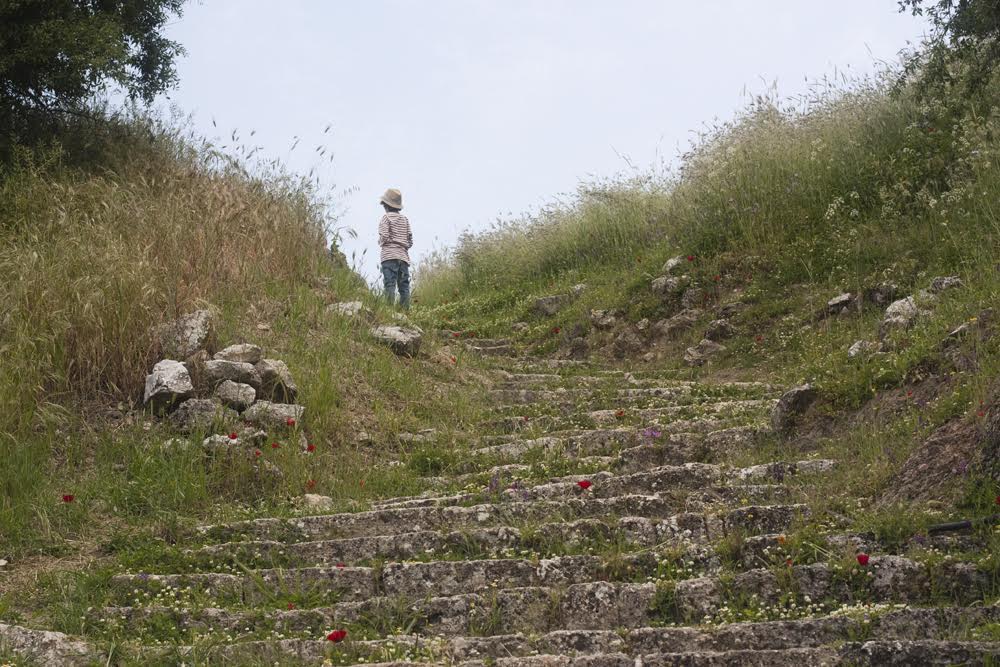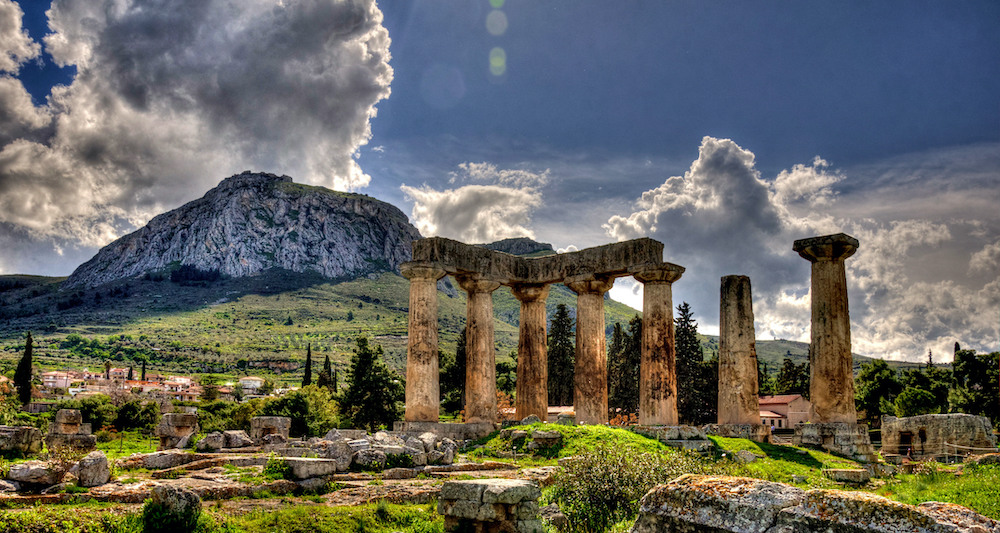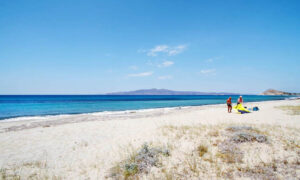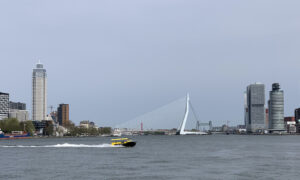Just a stone’s throw from Athens you will find Ancient Corinth, a tiny village with an astoundingly long history. How long, you ask? The place is thought to have been occupied as early as 5000 BCE, in Neolithic times.
The pretty hamlet is like a utopian dream located not too far past the oil refineries that plague the otherwise gorgeous landscape outside of Greece’s capital city. Honestly, Ancient Corinth (not to be confused with nearby contemporary Corinth) is one of those places that most Athenians rarely or never visit — it seems like it’s simply too close to the city to be worthwhile.
Now in my forties, I have finally learned my lesson: Ancient Corinth really does make for a joyful weekend jaunt.

Spring is gorgeous
It’s gorgeous in spring if you manage to hit the wildflower window but also a great autumn or winter getaway during one of our famous mild and sunny Greek weather spells. However, I would definitely avoid the place in the heat of summer or on one of the rare Greek cold, wet winter days. The archaeological sites (which are the highlights of ancient Corinth) are very exposed to the elements.
The village itself isn’t too exciting, but it’s a peaceful and friendly little place so it was much appreciated by this Athenian who really appreciates an occasional break from the chaotic and noisy capital. It consists mainly of a small square with a few tavernas (classic Greek restaurants which serve mostly traditional local dishes), coffee shops, houses and small hotels and tiny shops scattered here and there.
The first major point of interest is the ancient Temple of Apollo (and, on the same site, the local archaeological museum). Then, be sure to walk up and around the whole of Acrocorinth—the acropolis of Ancient Corinth, which is considered to be one of Greece’s most significant medieval castle sites. It also served as an important fortress long before the Middle Ages.
If you want to fully explore these places in an unhurried manner, I would dedicate at least an hour and a half to the Temple of Apollo and the surrounding site, an hour to the archaeological museum and several hours to Acrocorinth.
When my family and I went, we arrived at the village on a Saturday at lunchtime, ate, checked into our little hotel and spent the rest of the day wandering around the museum and the Apollo site. We worked up an appetite and walked back into town for a lovely dinner at Marinos.
Don’t be put off by this taverna’s relatively large size and central location (which are often red flags for tourist traps). It’s a friendly spot with a great view of the temple and – although the food is mostly typical
taverna fare – it’s of noticeably better quality than others in town.
The next day, Sunday, after breakfast, we had a coffee at a roadside café just outside the main entrance to Acrocorinth and spent the next several hours walking around, exploring and resting in the very tranquil setting.

Ancient Temple of Apollo
This site has been extensively excavated and is a beautiful spot to meander around and enjoy not only the timeless elegance of the temple itself, but also the remains of an ancient theater, pottery factory and gymnasium, among others. It’s a gorgeous open space and rather large, so plan to spend some time. It’s perfect for a picnic under a tree or for painters, photographers and poets to get their creative juices flowing.
The entrance to the site is just off the main square of the village. Be sure to get updated information on opening hours for this and all Greek archaeological sites, as they sometimes change according to season or just seemingly-random whim. Some sites also close pretty early (3 p.m. at certain times of the year) so it’s important to plan your time in advance.
Archaeological Museum of Ancient Corinth
Located very close to the Temple of Apollo, this lovely little museum was built in the 1930s by the American School of Classical Studies in Athens. It is comprised of various galleries including a prehistoric, a classical and a Roman one. Here you can see things like prehistoric cooking utensils, original mosaics, unique clay artifacts shaped like various body parts (from a healing sanctuary) and a variety of sculptures from different periods.
There is truly something for everyone at this little museum. Small and easily-digestible, it gives a nice general overview of this ancient town which has seen so much.
Acrocorinth
Occupied continuously from ancient times until the early 1800s, this amazing acropolis has been transformed many times over the years and bears elements from each period of its long history. There are remnants of various original fortress walls and other structures strewn around the beautiful massive monolith that sits just above ancient Corinth.
The views from the highest point of the site are extraordinary and well worth the steep walk, but don’t try it in the worst of the Greek summer heat! Also, be sure to bring water and a hat with you, whatever time of year you visit. See if you can imagine what the top-of-the-rock structure looked like in past times when it was: a temple dedicated to Aphrodite, a church and a mosque.
You can almost feel the rich history of the place as you take in the views of the vast timeless fertile valleys and the bluer-than-blue Gulf of Corinth below.
Speaking of the Gulf of Corinth, you can’t say you’ve properly explored the place til you spend at least five minutes oohing and ahhing of the Isthmus of Corinth and the Corinth Canal. If you have little kids, be prepared to see their jaws drop. It’s worth a quick stop to snap a photo and enjoy a tasty roadside souvlaki at a classic stand right there next to the viewing area. What these souvlaki stands lack in quality, they make up for in overuse of salt and oregano. Yum!
Where to stay: Marinos Rooms. Simple, clean and a few min walk from the main square in Ancient Corinth. Friendly folks, family-run place a few steps from the famous archaeological museum and the city square. There are deluxe triple rooms and family studios. Rates start at about 45 euros per night.
––––––––––
Read more about Athens and Greece in Dispatches’ archives.
Read more of Christina’s posts here.
A Pittsburgher by birth, Christina T. Hudson is also half Greek and has – so far – spent most of her life in Athens, the chaotic but captivating capital city of Greece.















